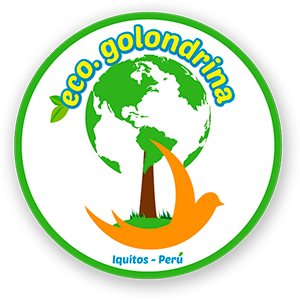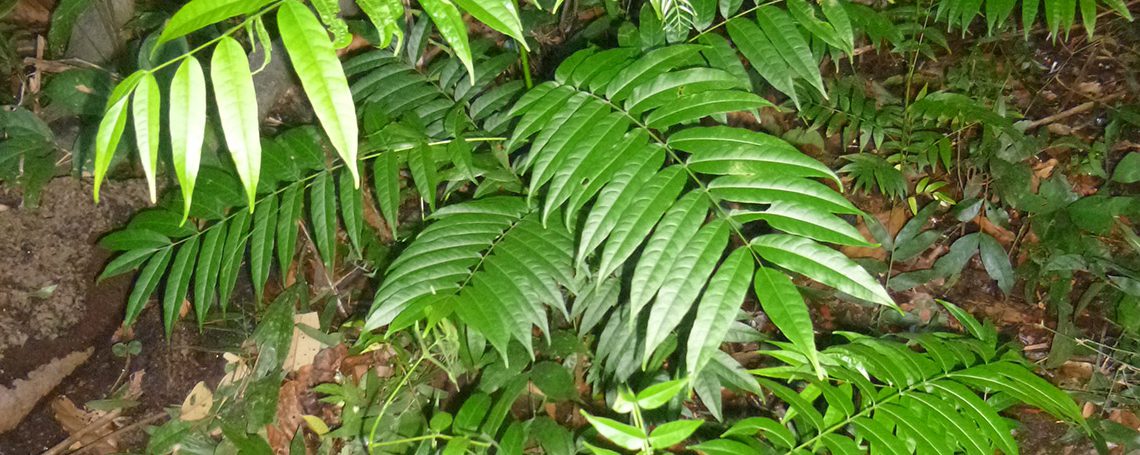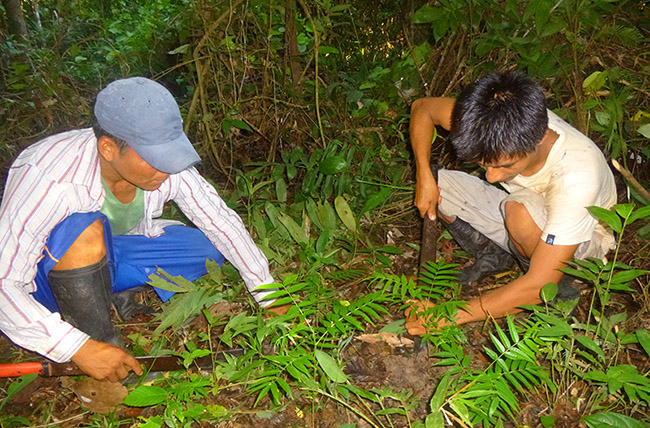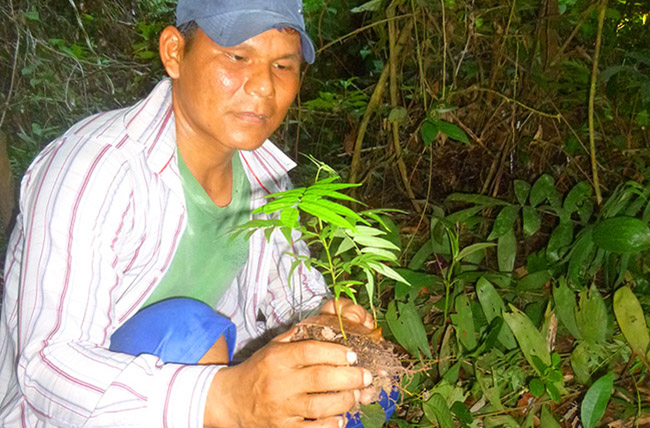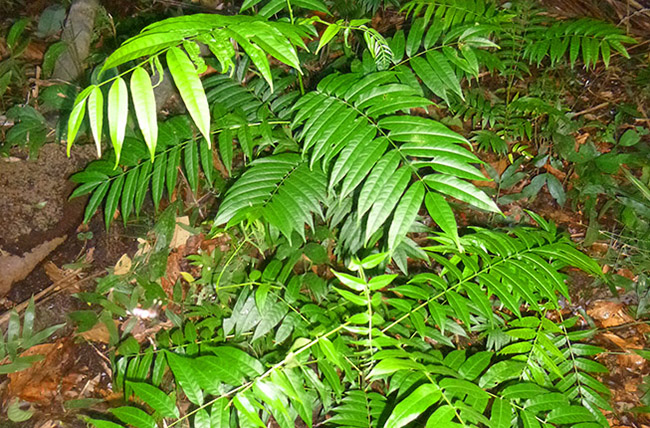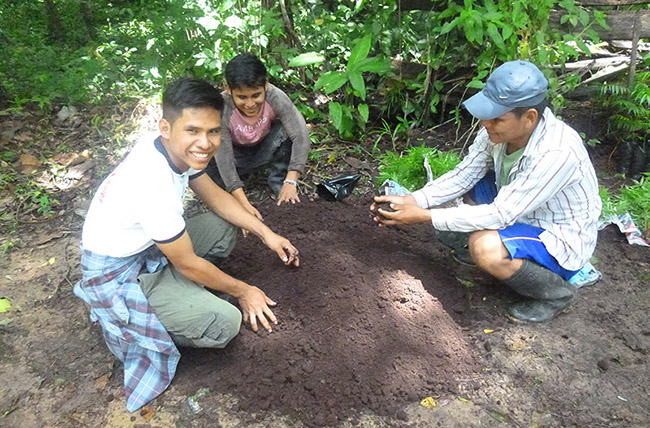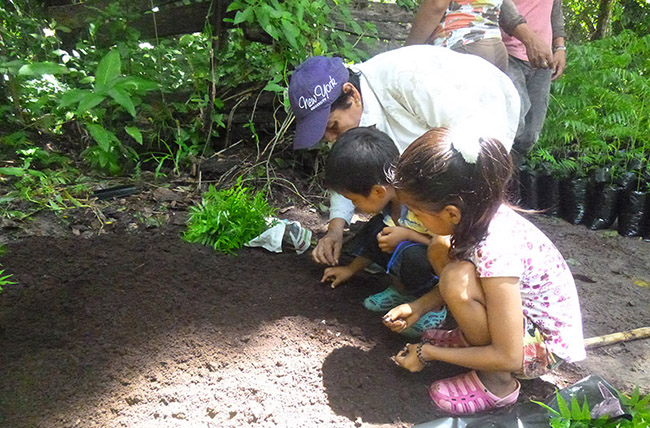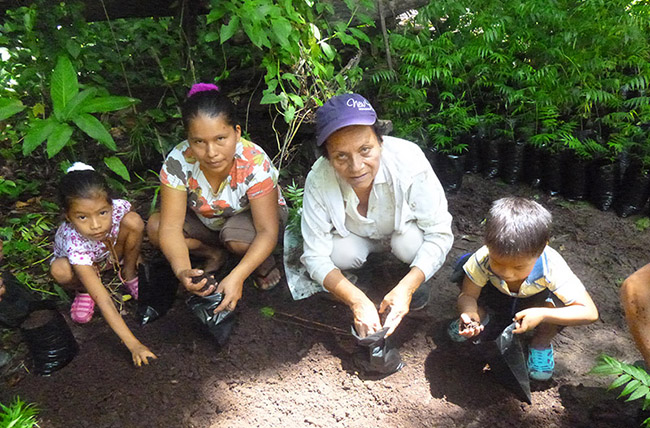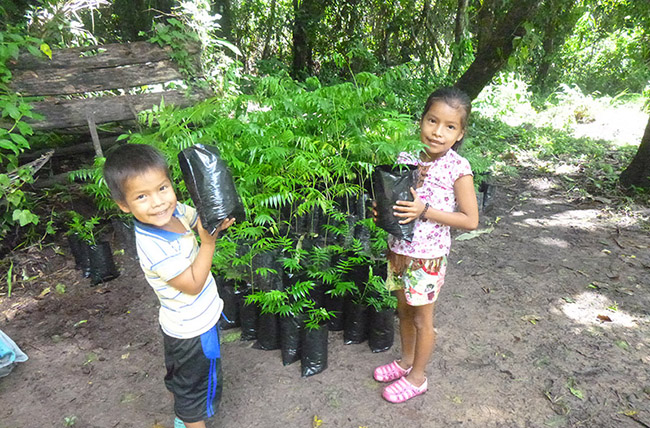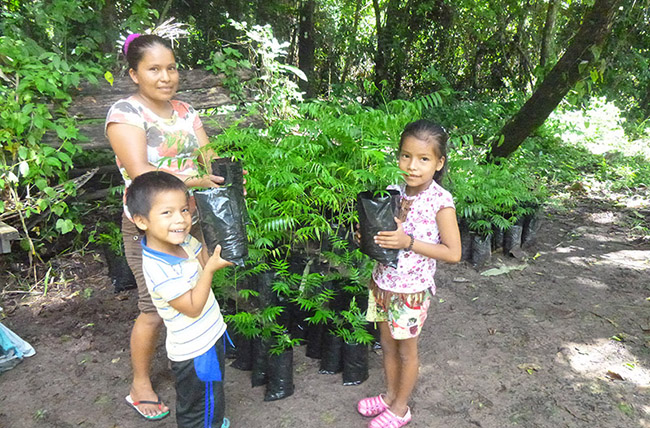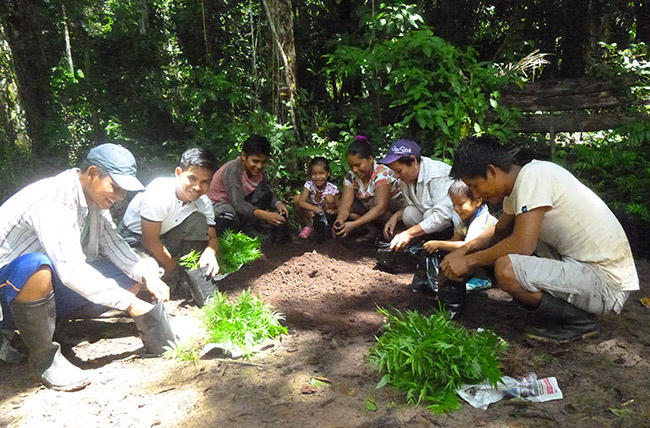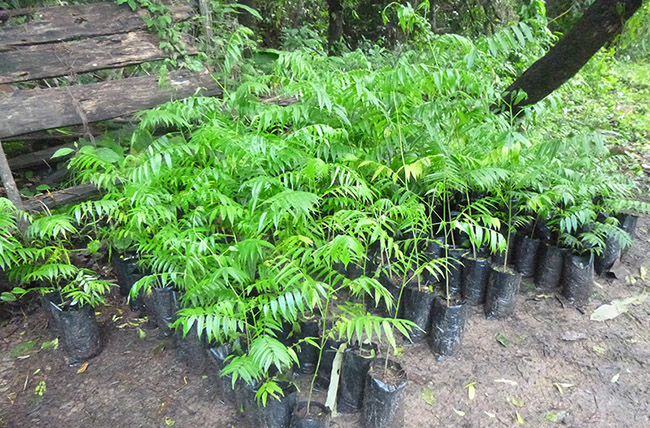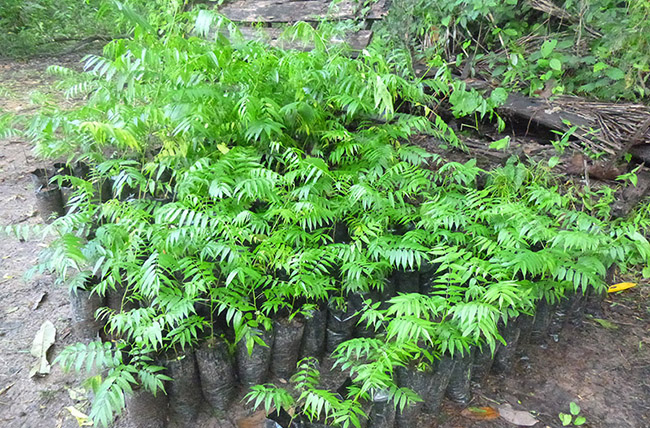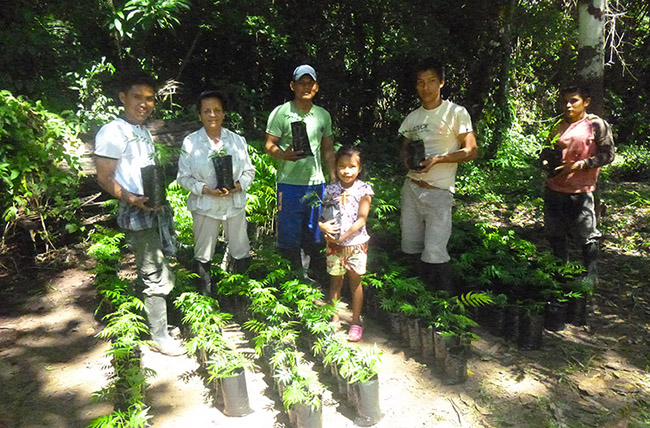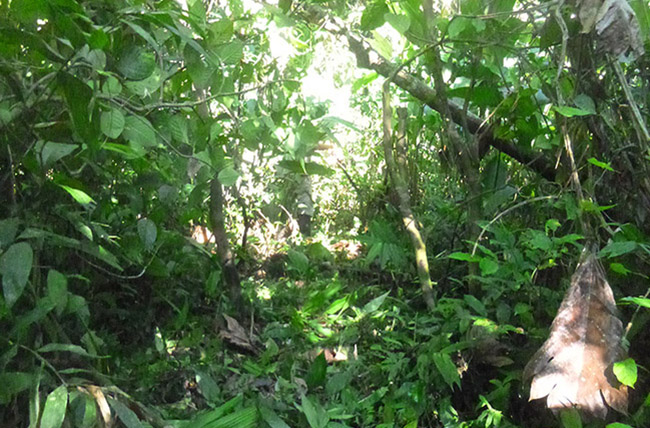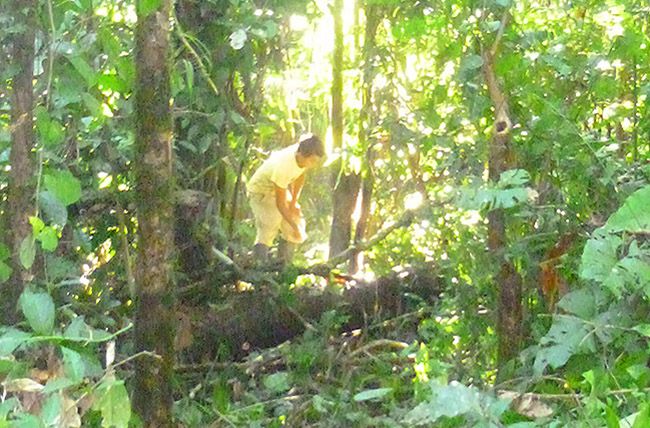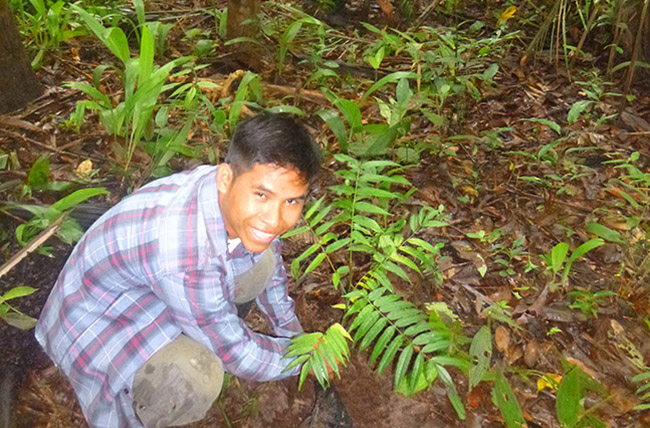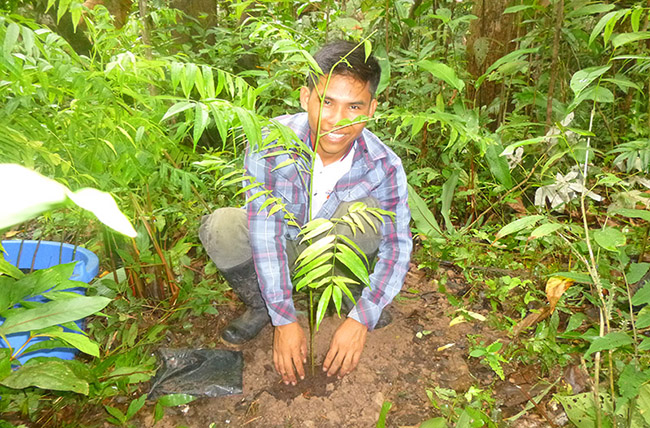Like all the forests of the Amazonian lowland forest, deforested by illegal loggers, our concession presents areas with loss of timber trees, which do not exceed 2 hectares, so after a rapid biological inventory (IBR) timber trees were found as : Eschweilera juruensis “Machimango”, Maquira coriacea “capinuri”, Callycophyllum spruceanum “capirona”, Manilkara bidentata “quinilla”, Hebea brasiliensis “rubber or shiringa” and “cedar” Cedrella odorata; The species most threatened by the value of its wood.
It is thus that, we decided to reforest these degraded areas, with “cedar” for which we perform the following steps.
1) Location of seedlings: goes to the places where there is natural regeneration or seedlings to begin:
- Selection of seedlings: with the purpose of choosing seedlings from 25cm up to 45cm.
- Extraction: once the seedlings are chosen with the help of a tool the soil is collected and extracted with great care, without damaging the roots, leaves and stem.
- Packing and Moving: the extracted seedlings are placed on sheets of paper, preferably moist, and then moved to the workplace.
2) Repique
- Preparation of the fertilizer and bagging: the fertilization is get from the dead wood, mixed with the black soil together, in which the leaves, roots or hard material are removed, then the fertilizer is placed into the plastic bags.
- Selection of seedlings: before planting the seedlings in the plastic bag, a new selection is made, in order to choose the best plants, with complete roots, straight stem and no broken buds and leaves.
3. Reforestation
- Location and preparation of the area to be reforested: the area destined for reforestation will have a perimeter of easy access, for which it will be delimited.
- Preparation of “Fajas”: every 3m in parallel form we make a “faja”, in which it will be a path of easy access without much ridding the existing vegetation.
- Sowing: at the beginning of each “Faja” a hole is made on the ground in which the seedlings are placed at a distance of 3m of each other, it is marked with a tape for identification.
- Registration: all the seedlings planted will be registered on a physical and digital basis.
- Environmental education to the inhabitants of the communities from the area of influence of the ecotourism concession, as a development and conservation tool.
- Creation of a large private conservation unit to mitigate climate and landscape change in the area of the Cumaceba and Yarapa creek.
- Creation of a historical base of the rubber boom in the Yarapa and Cumaceba creek, revaluing the participation of native people.
